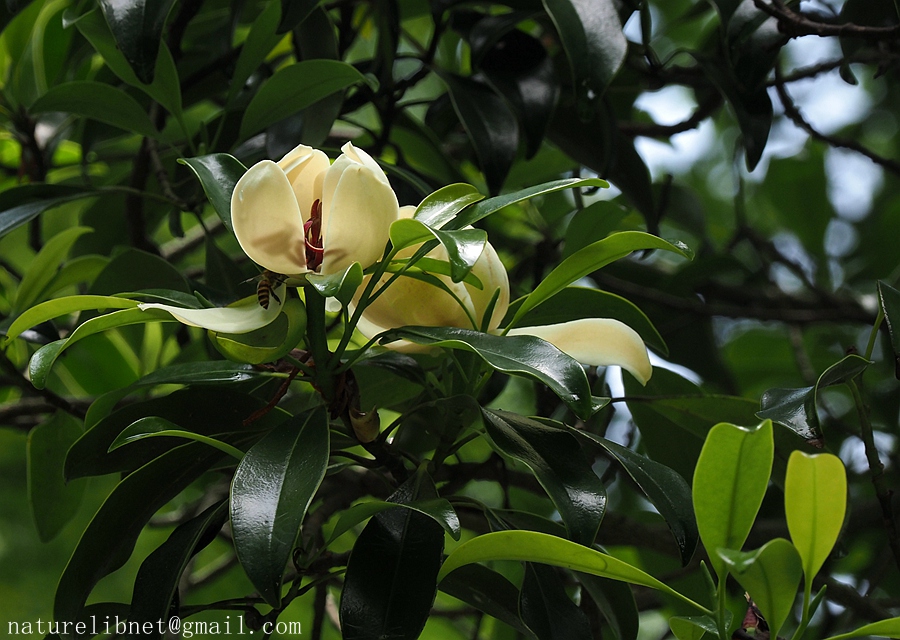- Scientific Name: Parakmeria lotungensis (Chun & C. H. Tsoong) Y. W. Law
- Ref: Acta Phytotax. Sin. 34: 91. 1996.
- Synonyms: Magnolia lotungensis Chun & C. H. Tsoong, Acta Phytotax. Sin. 8: 285. 1963;
M. nitida W. W. Smith var. lotungensis (Chun & C. H. Tsoong) B. L. Chen & Nooteboom;
Parakmeria lotungensis var. xiangxiensis C. L. Pang & L. H. Yan.
- Chinese Common Name: 乐东拟单性木兰 le dong ni dan xing mu lan
- Family: Magnoliaceae
- Genus: Parakmeria
- Distribution: Forests; 700-1400 m. Fujian, Guangdong, Guangxi, SE Guizhou, Hainan, Hunan, Jiangxi, Zhejiang.
- Type: Hainan (海南): Wutsze Shan (五指山), 1932-10-08, Chun et Tso (陈念劬,左景烈) 50122 (Holotype: IBSC)
Trees, to 30 m tall, to 30 cm d.b.h., andro-dioecious. Bark grayish white. Annual twigs green. Petiole 1-2 cm; leaf blade narrowly obovate-elliptic, obovate-elliptic, or narrowly elliptic, 6-11 × 2-3.5(-5) cm, leathery, abaxially pale green, adaxially green and glossy, secondary veins 9-13 on each side of midvein and conspicuously prominent on both surfaces when dry, base cuneate to narrowly cuneate, apex acuminate with an obtuse tip. Male flower: tepals 9-14; outer 3 or 4 tepals pale yellow, obovate-oblong, 2.5-3.5 × 1.2-2.5 cm; tepals of inner 2 or 3 whorls white; filaments purplish red; connective purplish red, exserted and forming a mucro; torus long sharply acuminate at apex and sometimes with a gynophore. Bisexual flower: tepals 10-35, same shape as those of male flowers but smaller; stamens 10-35; gynoecium green, ovoid; carpels 10-20 (sometimes 1-5 due to abortion, and flowers tending to be male). Fruit ellipsoid-ovoid or rarely obovoid, 3-6 cm. Seeds ellipsoid to ellipsoid-ovoid, 7-12 × 6-7 mm; testa red. Fl. Apr-May, fr. Aug-Sep. 2n = 114*.(Flora of China)
